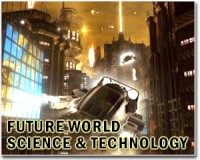 |
Washington (AFP) Dec 23, 2010 Air-powered batteries, 3-D cellphones that project holographs and personalized commutes are among the predictions of IBM scientists gazing into their crystal balls. The US computer giant this week released its annual "Next Five in Five" list of five innovations expected over the next five years. Among the predictions are advances in transistors and battery technology that "will allow your devices to last about 10 times longer than they do today," IBM said. Today's lithium-ion batteries could be replaced by batteries "that use the air we breathe to react with energy-dense metal, eliminating a key inhibitor to longer lasting batteries," IBM said. "If successful, the result will be a lightweight, powerful and rechargeable battery capable of powering everything from electric cars to consumer devices. "Better yet, in some cases, batteries may disappear altogether in smaller devices," IBM said, by reducing the amount of energy per transistor to less than 0.5 volts and relying on a technique known as "energy scavenging." "Some wrist watches use this today -- they require no winding and charge based on the movement of your arm," IBM said. "The same concept could be used to charge mobile phones for example -- just shake and dial." Also on the cards: 3-D and holographic cameras that fit into cellphones allowing video chat with "3-D holograms of your friends in real time." Personalized commutes are another development seen by IBM scientists, who are already at work on using new mathematical models and predictive analytics technologies to deliver the best routes for daily travel. "Adaptive traffic systems will intuitively learn traveler patterns and behavior to provide more dynamic travel safety and route information to travelers than is available today," IBM said. Human beings will also increasingly become "walking sensors," IBM said, providing valuable data to "fight global warming, save endangered species or track invasive plants or animals that threaten ecosystems around the world." "In five years, sensors in your phone, your car, your wallet and even your tweets will collect data that will give scientists a real-time picture of your environment," IBM said. "A whole class of 'citizen scientists' will emerge, using simple sensors that already exist to create massive data sets for research," it said. Finally, IBM said, scientists will find ways to better recycle heat and energy from data centers to "do things like heat buildings in the winter and power air conditioning in the summer." "Up to 50 percent of the energy consumed by a modern data center goes toward air cooling," IBM said. "Most of the heat is then wasted because it is just dumped into the atmosphere. "New technologies, such as novel on-chip water-cooling systems developed by IBM, the thermal energy from a cluster of computer processors can be efficiently recycled to provide hot water for an office or houses," it said. IBM posted a YouTube video of the five predictions at www.youtube.com/watch?v=anKiEoxkpxM
Share This Article With Planet Earth
Related Links Space Tourism, Space Transport and Space Exploration News
 British eight-year-olds publish study in top science journal
British eight-year-olds publish study in top science journalLondon (AFP) Dec 22, 2010 A group of British children aged between eight and 10 had their school project on bees published by the prestigious Royal Society in a world scientific first, the society said Wednesday. The pupils from Blackawton primary school in the southwestern English county of Devon investigated how bumblebees see colours and patterns using a series of experiments in a local churchyard. The finding ... read more |
|
| The content herein, unless otherwise known to be public domain, are Copyright 1995-2010 - SpaceDaily. AFP and UPI Wire Stories are copyright Agence France-Presse and United Press International. ESA Portal Reports are copyright European Space Agency. All NASA sourced material is public domain. Additional copyrights may apply in whole or part to other bona fide parties. Advertising does not imply endorsement,agreement or approval of any opinions, statements or information provided by SpaceDaily on any Web page published or hosted by SpaceDaily. Privacy Statement |